Pre-germinating lemon seeds is a quick and fun way to kickstart your gardening journey. It means coaxing your seeds to life without soil. This is done to achieve faster, more even sprouting, higher germination rates, and stronger seedling vigor.
We’ll show you two easy methods using simple household items. But first, let’s get those seeds out of your lemon!
How To Prepare the Lemon Seeds for Germination
Let’s cut our lemon in half and carefully extract the seeds from the pulp. Give them a good rinse and wipe them down to remove any sticky sugar residue. Bacteria and fungi love sugar, and we want to keep them away from our seeds. Now, gently peel off the thin outer layer or “white skin” from each clean seed.
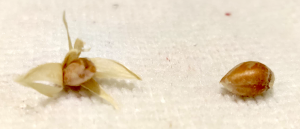 Don’t split the seeds in half.
Don’t split the seeds in half. 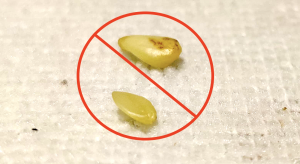 Once you have your clean and peeled seeds, it’s time to germinate.
Once you have your clean and peeled seeds, it’s time to germinate.Lemon Seed Germination: Method 1
You’ll need:- 2 Paper Towel Sheets
- Zip Lock Bag
- Water Sprayer (or a glass of water)
Lay a paper towel flat on a clean surface and dampen it with a water sprayer. No sprayer? Simply sprinkle water over the towel using your hand. The key is to moisten the towel without soaking it. Then, space the seeds out on the towel, leaving at least an inch or two between each one.
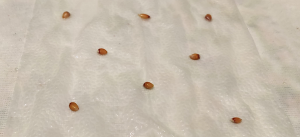
Cover it up with the other paper towel sheet and spray or sprinkle the new sheet with water again.
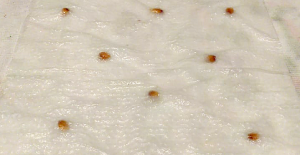
Carefully place them all in the ziplock bag, leaving a little bit of air inside before sealing it.
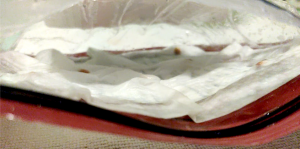

Lemon Seed Germination: Method 2
You’ll need:- Container (bowl or tray)
- Paper Towel
- Clear Plastic Wrap
- Water Sprayer (or a glass of water)
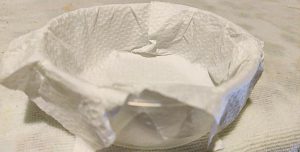
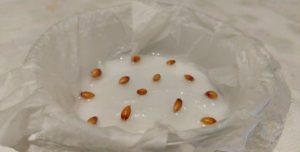 Cover the container with clear plastic wrap.
Cover the container with clear plastic wrap.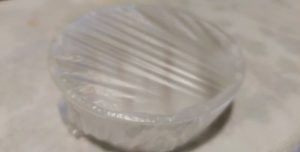
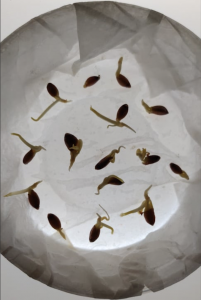
Other Seeds That Pre-Germinate Well
Vegetables
-
Peas & beans (snap, pole, bush, soy, fava): Fast to sprout. Plant once the root nub shows.
-
Sweet corn: Pre-sprout to beat cool soils. Plant ASAP after the radicle appears.
-
Cucurbits (cucumber, zucchini, squash, pumpkin, melons): Very responsive. Don’t let roots get long (plant at 1–5 mm).
-
Tomato & pepper: Slow starters. Pre-germinating speeds up even emergence.
-
Brassicas (broccoli, cabbage, kale, cauliflower): Reliable and easy to handle tiny sprouts.
-
Leafy greens (lettuce, chard, spinach): Helps in warm/cool swings. Keep cool for lettuce.
-
Alliums (onion, leek): Pre-germination improves patchy germination.
Herbs
-
Basil, dill, cilantro: Quick wins; transplant gently.
-
Parsley: Soak 12–24 h first, then pre-germinate (it’s slow).
-
Chives: Uniform stands from pre-sprouting.
Flowers
-
Sunflower, marigold, zinnia, cosmos: Very easy. Plant as soon as you see a tip.
-
Sweet peas: Scarify/soak, then pre-germ for faster starts.
-
Nasturtium: Nick or soak. Pre-germinating makes them pop.
Quick Tips
- Soak seeds in clean water for 8–24 hours.
-
Check daily. Plant when the white root is 1–5 mm long.
-
Handle by the seed coat, not the root. The root is very fragile.
-
Pre-germinated seeds dry out faster in soil. Water gently and consistently.
Extra Germination Speed Boosters
Use these extra speed boosters when they apply.
Scarify hard coats by lightly nicking or sanding seeds, then soak so water penetrates faster. Try a warm–soak cycle by alternating 30 minutes in warm water with 30 minutes at room temperature for thick-coated seeds to speed uptake.
For cleanliness and oxygenation, give seeds a hydrogen peroxide dip using 3% H₂O₂ diluted 1:10 for 10 minutes, then rinse. This reduces mold and can nudge slow starters.
You can also prime seeds by soaking for 6–12 hours, drying them to a surface-dry state, and sowing; this works well for carrot, parsley, and onion to even out timing.
